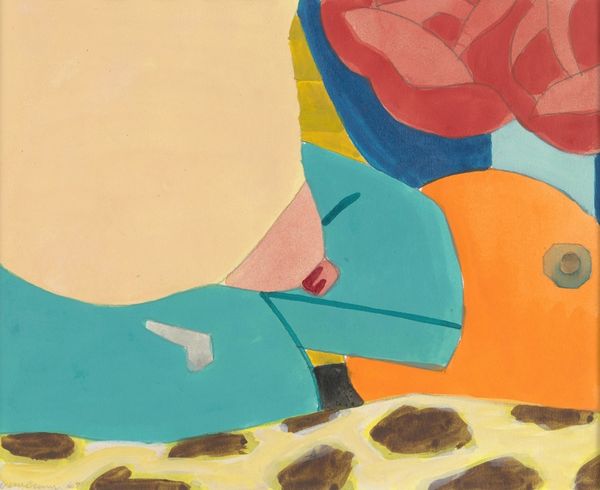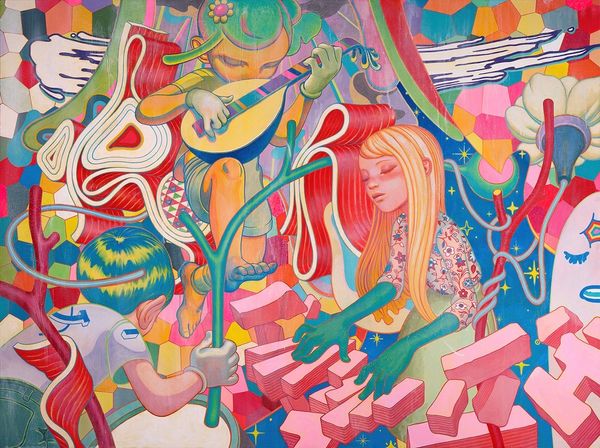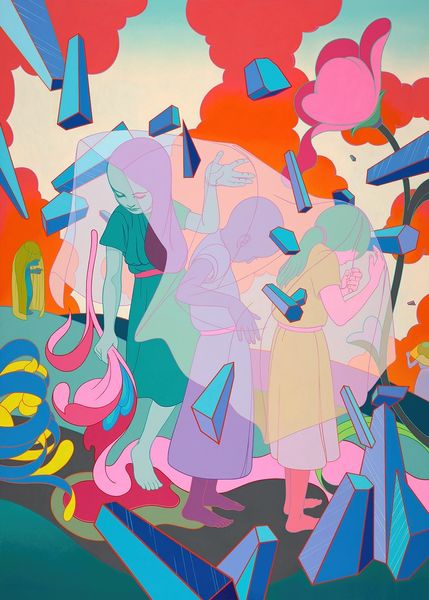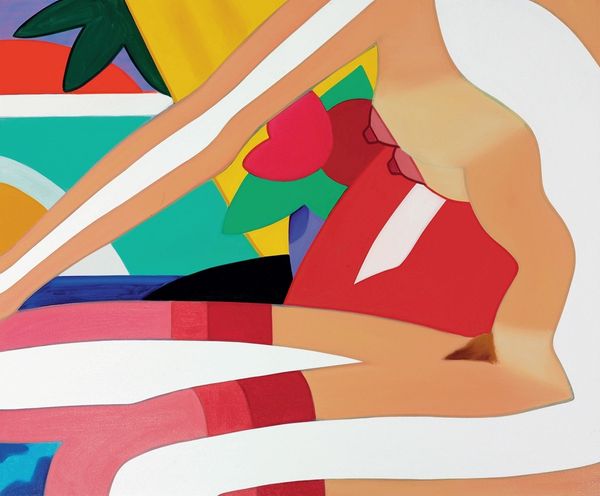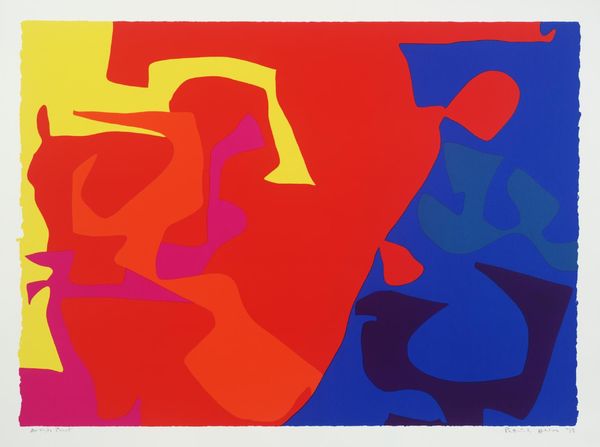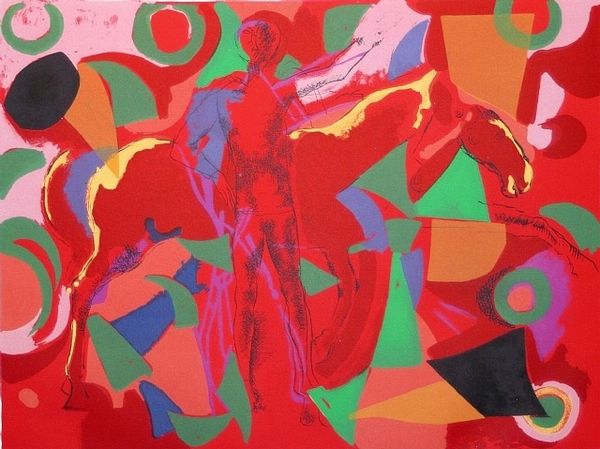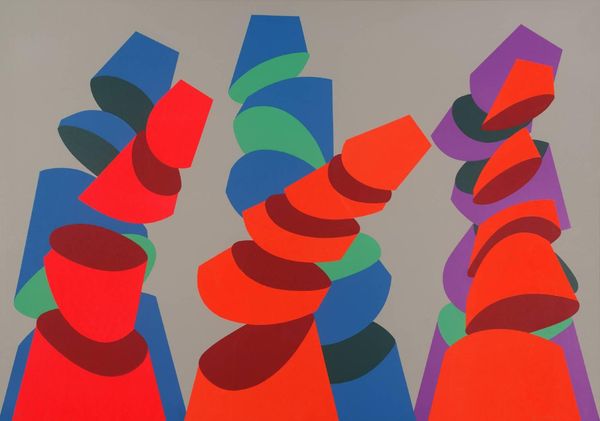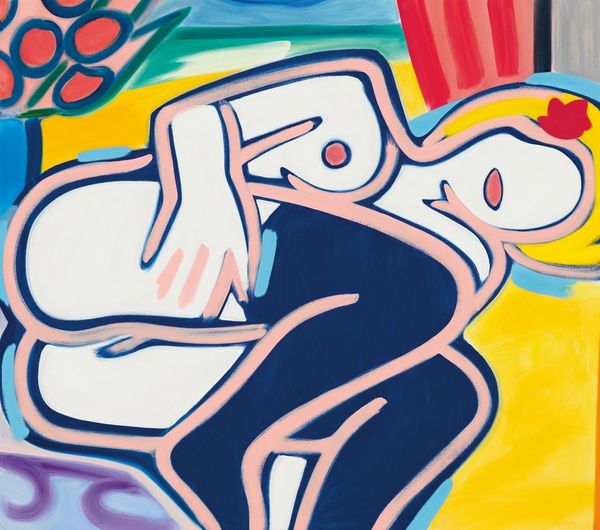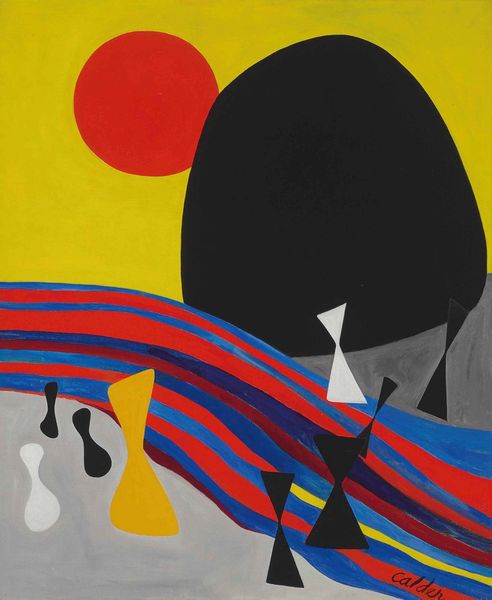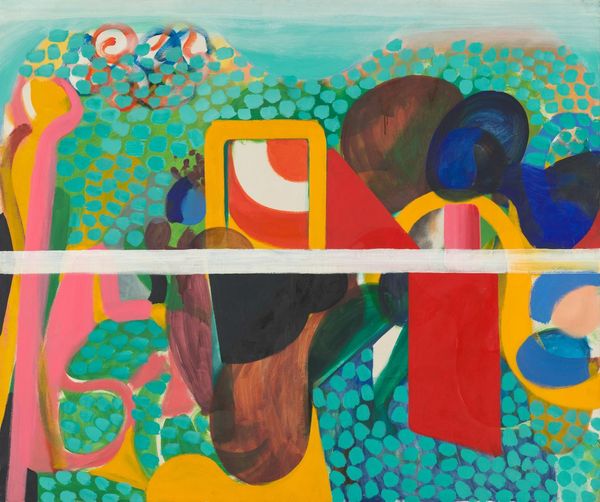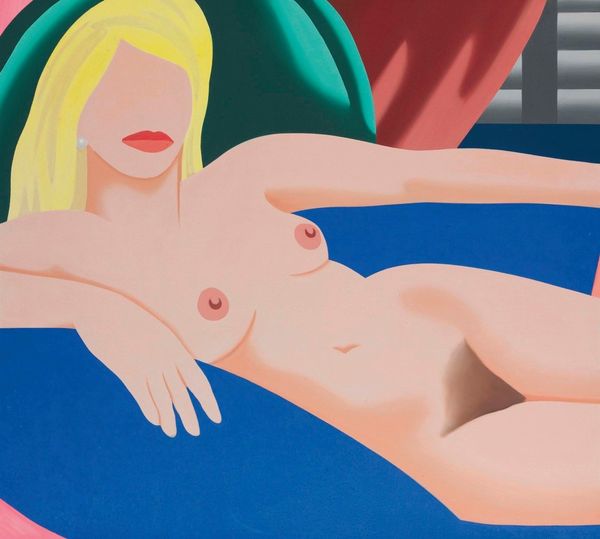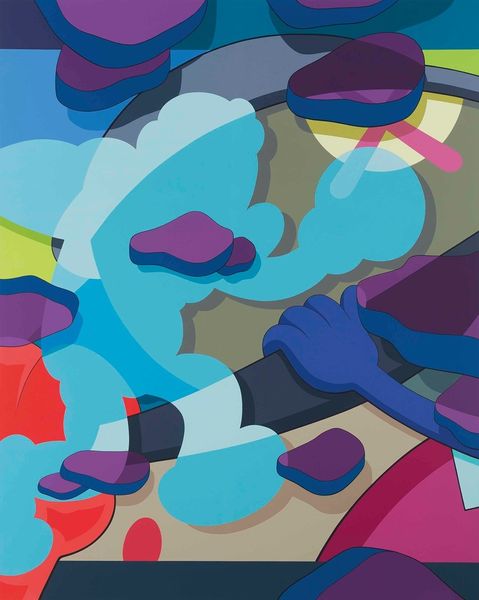
Copyright: Modern Artists: Artvee
Curator: Tom Wesselmann’s "Sunset Nude," created in 2002, bursts with vibrant color and bold shapes, encapsulating a pop-art aesthetic. It is a striking image. Editor: My first impression? Seductive, in a distinctly artificial way. The composition feels flattened, almost like an advertisement. Curator: That's an insightful observation. Wesselmann's work often engaged with advertising and consumer culture, challenging the conventional artistic notions and what a fine art painting should look like. The imagery of a nude against this striking sunset mimics how women were being sold and perceived at the time. Editor: Exactly. There's a clinical detachment here. The stylized rendering of the nude figure, devoid of shadows or much detail, emphasizes its objectification. We're positioned as viewers, voyeurs even, invited into a private moment manufactured for public consumption. Curator: Indeed, Wesselmann’s strategic use of bold colours enhances that. Notice how the oranges, reds, blues and greens compete for attention and how he creates clear delineation by dividing them geometrically. Editor: Absolutely, the flattened space amplifies the feeling of unreality. The smooth, unbroken expanses of color suggest the artificiality inherent in advertising’s promises of the perfect body and the perfect life. Is the artist being critical or is he perpetuating a way of viewing bodies? Curator: Well, some art historians believe Wesselmann was trying to reveal the underlying power dynamics within society and between sexes at the time. But whether or not his message came across as one of commentary or one of reinforcement is certainly up for debate. His approach, influenced by pop art, mirrors and amplifies what’s already present in mass media. Editor: This tension is what makes this painting compelling. It is a powerful artwork in the way it addresses beauty standards, gender, and the commodification of intimacy, even if his intentions weren’t in the right place. Curator: It really encapsulates that period in time doesn’t it? A time when we were challenging standards. Editor: Exactly, it speaks to how those same challenges are still prevalent today. It forces us to ask ourselves what it means to see and to be seen in a culture obsessed with images.
Comments
No comments
Be the first to comment and join the conversation on the ultimate creative platform.
